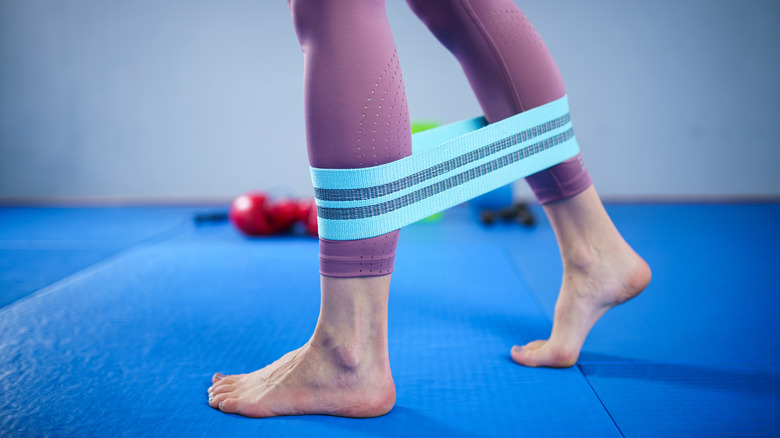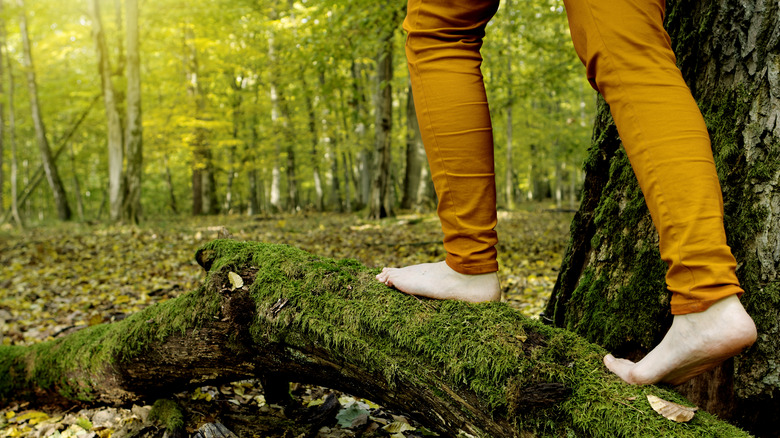Is Working Out Barefoot Really Good For You?
Ditching your sneakers and going barefoot during a workout is becoming more common. The idea is that because our feet have thousands of nerve endings, going barefoot challenges the foot's biomechanics and creates a stronger foundation, which can lead to better workouts and other health benefits (via Shape). But is this barefoot training trend backed up by science and should you try it?
"When you stimulate the nerves of the foot, you get a better understanding of what you're standing on and how you're stepping, and it starts to shape your overall movement," functional podiatrist, Emily Splichal, D.P.M., explains to Shape. Going shoeless ignites these nerves, and encourages natural movements or stances by asking your foot to employ a foot tripod — a three-point contact system (via Byrdie). This may explain why podiatrists or physical therapists often have you squat shoeless to inspect if you have proper foot positioning.
According to a 2014 study, barefoot training also improves agility and ankle stability, which could prevent ankle injuries in the long run. Aside from increasing athletic performance and movement, going barefoot could help your foot create a natural arch support since it helps improve those weakened foot muscles (via Byrdie). Eventually, this may reduce pain or discomfort in the foot, especially if the pain is caused by plantar fasciitis.
When should you workout barefoot or skip altogether?
When it comes to working out, Shape suggests going barefoot for almost any exercise ranging from bodyweight training, and kettlebell lifts to plyometrics. Think squatting, deadlifts, burpees, lunges, and more. On top of these workouts, there are some sports that by nature are barefoot friendly. For instance, "gymnastics, yoga, and pilates are sports that require the athlete to perform barefoot and are the go-to methods to improve posture and movement," explains certified personal trainer, Jesse Frank, to Byrdie.
You could even attempt training barefoot when doing any type of jumping exercise, as per Shape. However, the key here is to pay attention to your landing technique. It's important to land in a neutral foot position to avoid injury because there isn't a shoe that provides additional support, added Emily Splichal.
Nevertheless, if you find yourself powerlifting or bodybuilding, chances are you'll want some shoes that offer a stable base. Something that's stiff and offers generous support. On a similar note, if you're playing sports or running, lace up some sneakers. Running shoes will protect your feet from gravel and broken debris, such as glass. Along with sport-specific footwear, Livestrong shares that shoes help with injury prevention, such as muscle strains, improve athletic performance, and have cushion technology designed to reduce stress on the foot.


